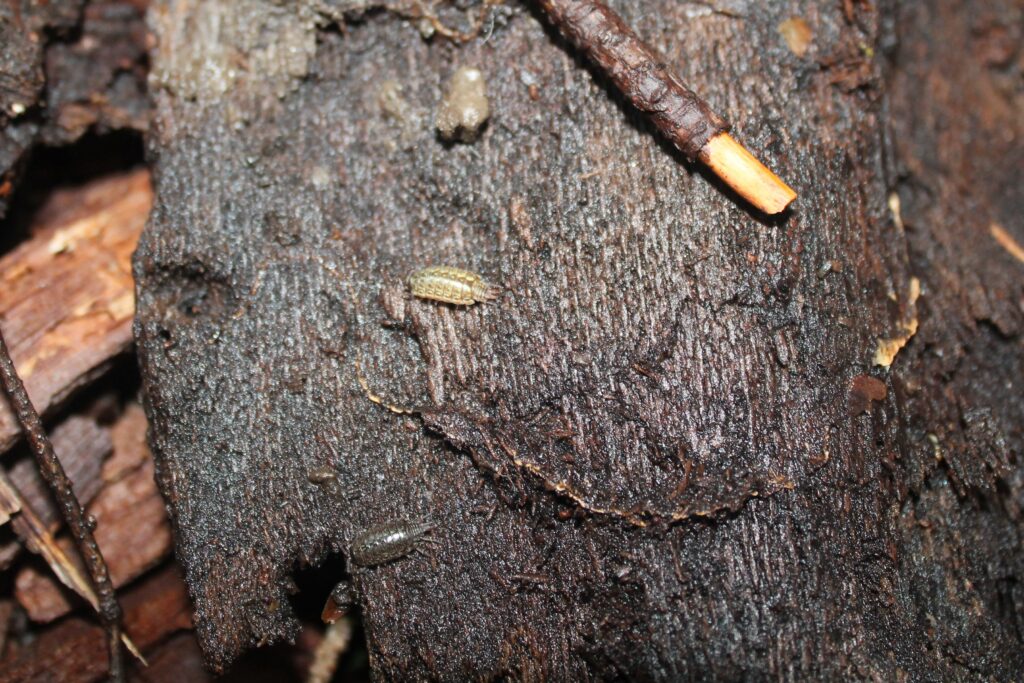Common Striped Woodlouse (Philoscia muscorum)

Take a look under some old forest detritus and you might stumble upon the common striped woodlouse. Unlike the pillbug, the woodlouse cannot roll itself into a ball. They can, however, run fairly quickly, which resulted in one of its other names, the fast woodlouse. They have a shiny body, characterized by the mottled coloured stripes across their back. Woodlice are not insects, but isopods, a common relative of crustaceans.

The striped woodlouse is an introduced species in British Columbia. They require a moist environment, which is why they are so common on our wet coast, where they can be found hiding amongst mosses, grasses, and under damp woody debris. Their home is also their diet, as they mostly consume dead vegetation, making them a special type of consumer called a detritivore. Detritivores are especially important to our ecosystems as they return the nutrients from dead material back to the soil to be resorbed by plants.

When the weather gets cold, these fast creatures slow down significantly, so you have a better chance of getting a good look during cold weather. If you do go looking for these small creatures, be careful to replace the pieces of dead wood that you turn over carefully so as to not crush the little inhabitants.
For more information, check out Garden Safari, Natural England, and Amisfield Walled Garden.


